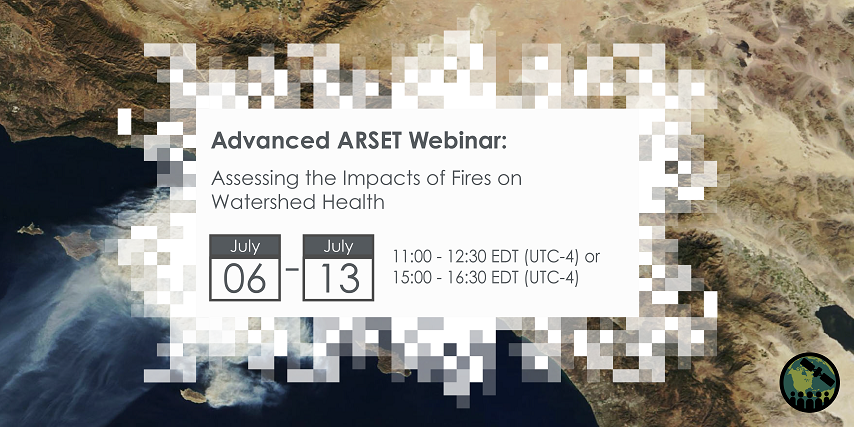This advanced-level training will focus on using remote sensing observations for monitoring post-fire impacts on watershed health, building off the ARSET training offered in 2021: Satellite Observations and Tools for Fire Risk, Detection, and Analysis. Specifically, this training will highlight uses of NASA Earth observations (EO) for pre-fire land cover mapping, watershed delineation and stream mapping, post-fire burn severity mapping, and pre- and post-fire riverine and freshwater water quality. This three-part training will highlight case studies that use remote sensing data for assessing the impacts of fires on watersheds. This training will also provide participants with hands-on exercises for using NASA EO for these assessments within the Soil Water Assessment Tool (SWAT) and Google Earth Engine.
Relevant UN Sustainable Development Goals:
- Goal 6: Ensure availability and sustainable management of water and sanitation for all
- Target 6.6: By 2030, protect and restore water-related ecosystems, including mountains, forests, wetlands, rivers, aquifers and lakes
- Goal 11: Make cities and human settlements inclusive, safe, resilient and sustainable
- Target 11.5: By 2030, significantly reduce the number of deaths and the number of people affected and substantially decrease the direct economic losses relative to global gross domestic product caused by disasters, including water-related disasters, with a focus on protecting the poor and people in vulnerable situations
- Goal 15: Protect, restore and promote sustainable use of terrestrial ecosystems, sustainably manage forests, combat desertification, and halt and reverse land degradation and halt biodiversity loss
- Target 15.3: By 2030, combat desertification, restore degraded land and soil, including land affected by desertification, drought and floods, and strive to achieve a land degradation-neutral world
Course Dates: July 6, 11, & 13, 2023
Times: 11:00-12:30 or 15:00-16:30 EDT (UTC-4); There will be identical sessions at two different times of the day. Participants need only to register and attend one daily session.
To register: https://go.nasa.gov/3pmaz5U
Learning Objectives:
By the end of this training, attendees will be able to:
- Distinguish, compare, and contrast the biophysical conditions pre-and post-fire
- Analyze the key fire science criteria to select the appropriate data from satellites/instruments for a given watershed
- Acquire land use & land cover maps for the region of interest
- Select river basin and sub-basin boundaries for their region of interest
- Recognize how to develop a river basin-scale model using SWAT to simulate the quality and quantity of surface and groundwater
Audience: The primary audience for this training consists of local, regional, state, federal, and international organizations involved in resource and ecosystem management and disaster response. The secondary audience for this training are those with an interest in applying remote sensing data toward fire science.
Course Format: Three, 1.5-hour parts

